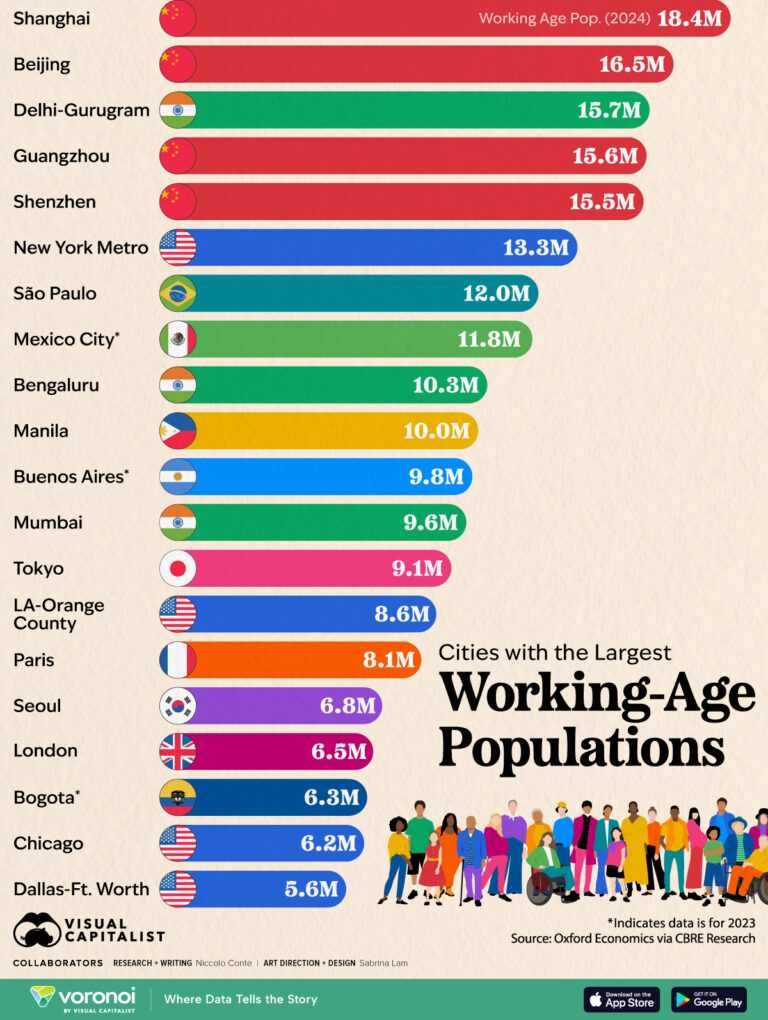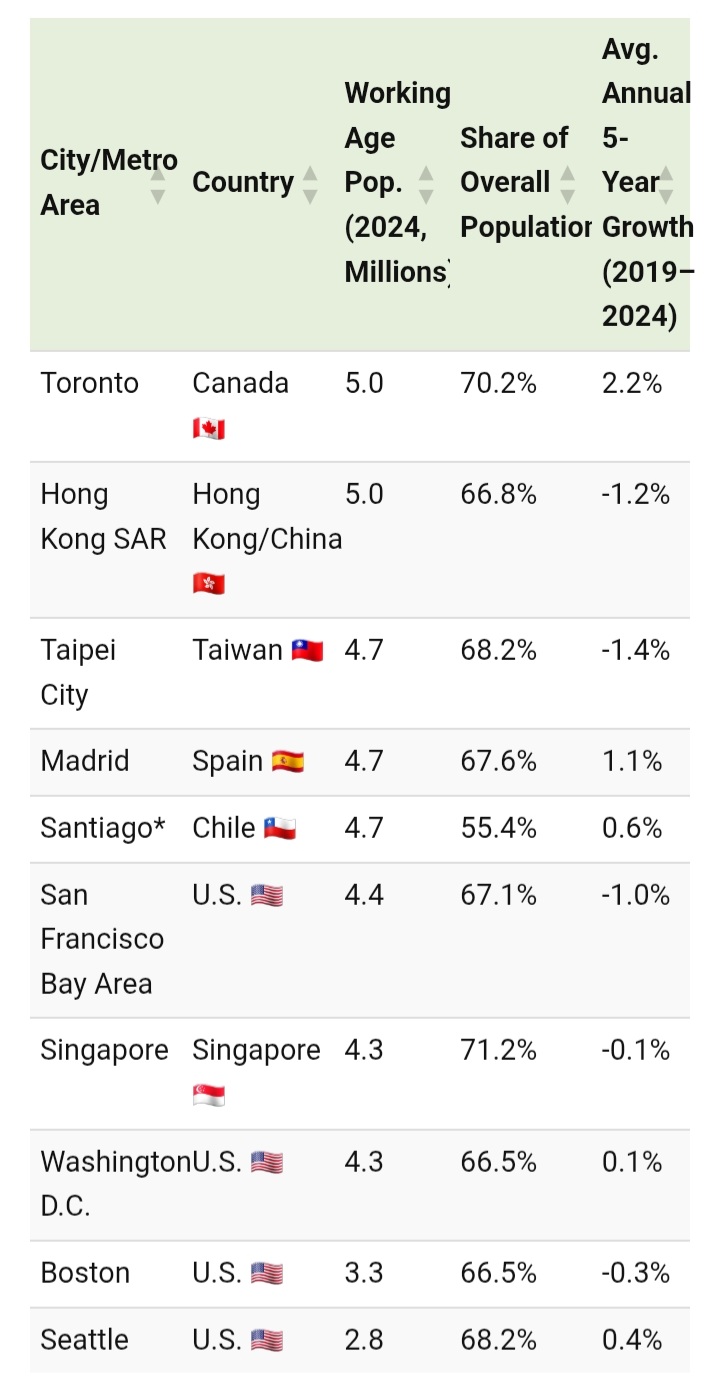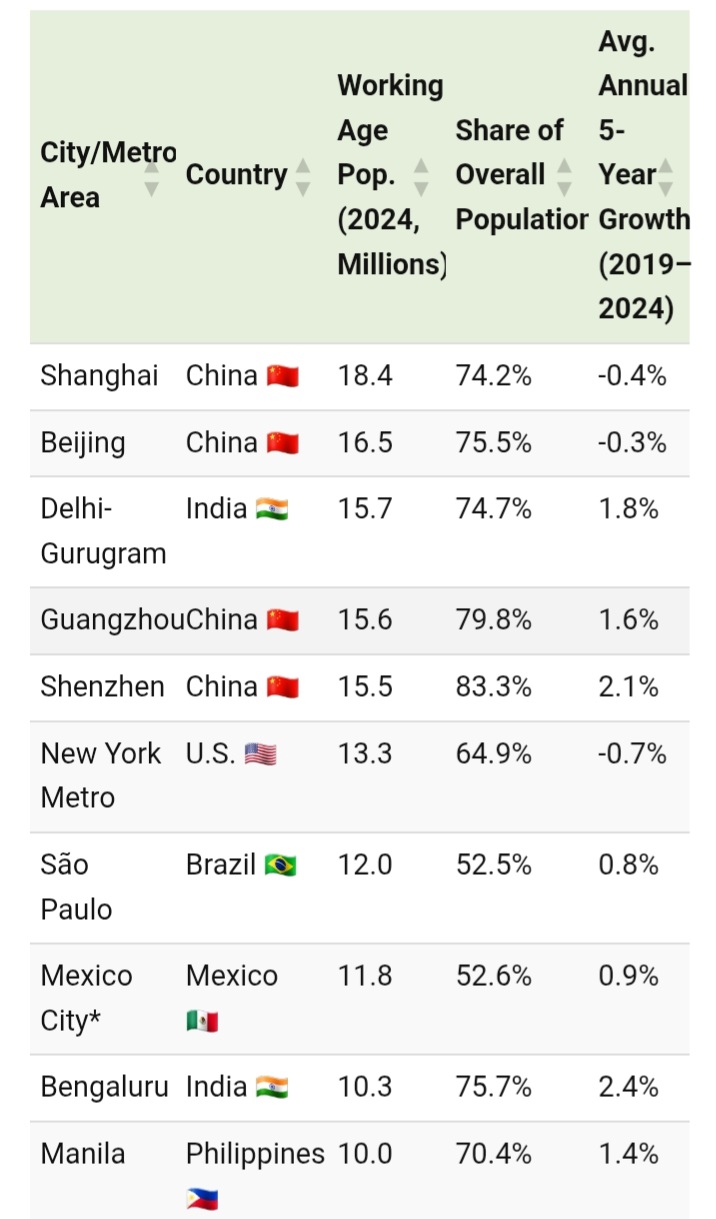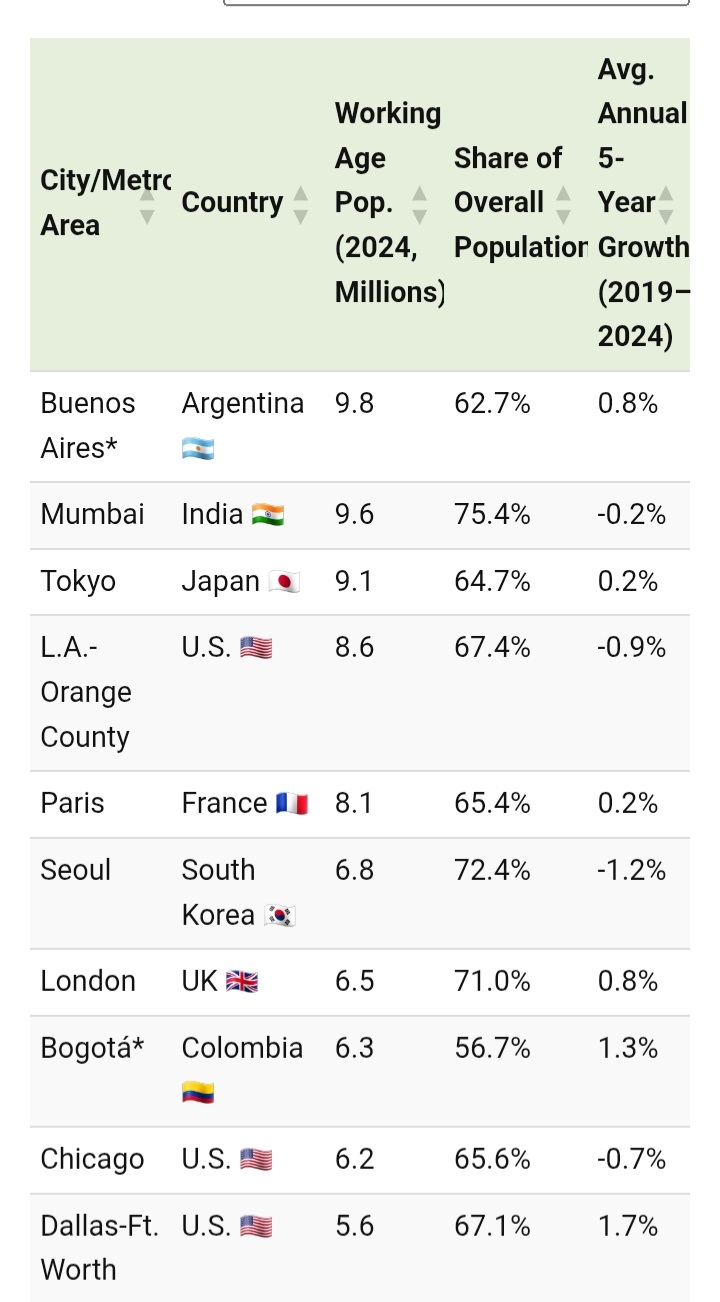As the world becomes increasingly urbanized, cities are transforming into economic engines driven by people of working age, who form the backbones of local economies.
Multiethnic group of workers standing together, employment conceptFrom Shanghai to London, several cities have become hubs for urbanization, forming massive economies on their own.
This infographic breaks down the cities with the largest working-age populations aged 25–64 globally, based on data from Oxford Economics via CBRE Research.
The World’s Largest Urban Workforces
Chinese cities dominate the list of cities with the largest working-age populations, with four of the top five cities in China.
Here’s a look at the world’s top cities by working-age population:
Shanghai leads the list with 18.4 million working-age residents, followed by Beijing at 16.5 million. Shenzhen, ranking fifth on the list, is a manufacturing hub and has the highest proportion of working-age adults aged 25–64, accounting for 83.3% of its population.
Meanwhile, India, the world’s most populous country, has two cities on the list with Delhi and Mumbai both being among the cities with the biggest workforces.
New York is the largest U.S. city on the list, ranking sixth with 13.3 million working-age adults. Other American cities with significant workforces include Los Angeles, Chicago, and Dallas.
In terms of growth in working-age populations, the city of Bengaluru in India leads, averaging 2.4% annual growth over the last five years. Canada’s financial hub, Toronto, follows at 2.2%, with Shenzhen ranking third at 2.1% average growth in working-age population from 2019 to 2024.
However, urban labor markets are not growing everywhere. Cities like Seoul, Hong Kong, and San Francisco are seeing declines in their working-age populations, driven by aging, declining birth rates, and migration patterns.
See chart below:

















 Share on WhatsApp
Share on WhatsApp
 Share on Twitter
Share on Twitter
 Share on Facebook
Share on Facebook

